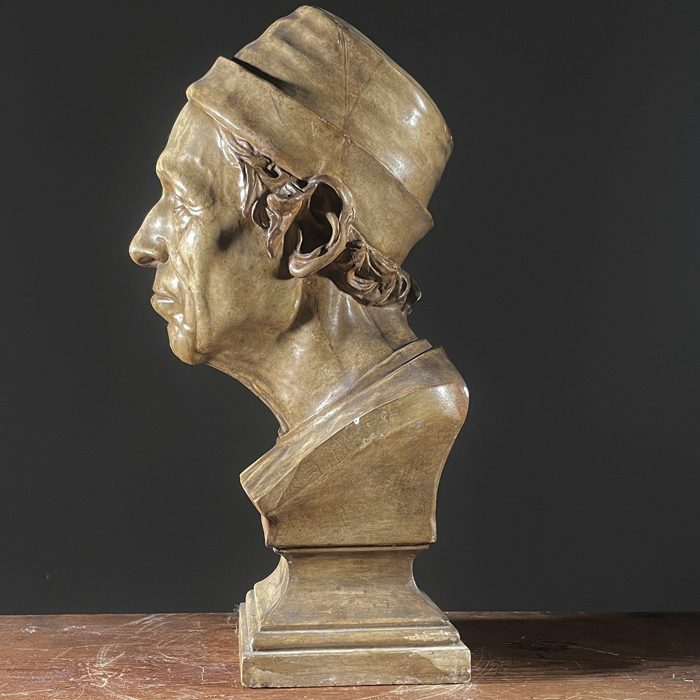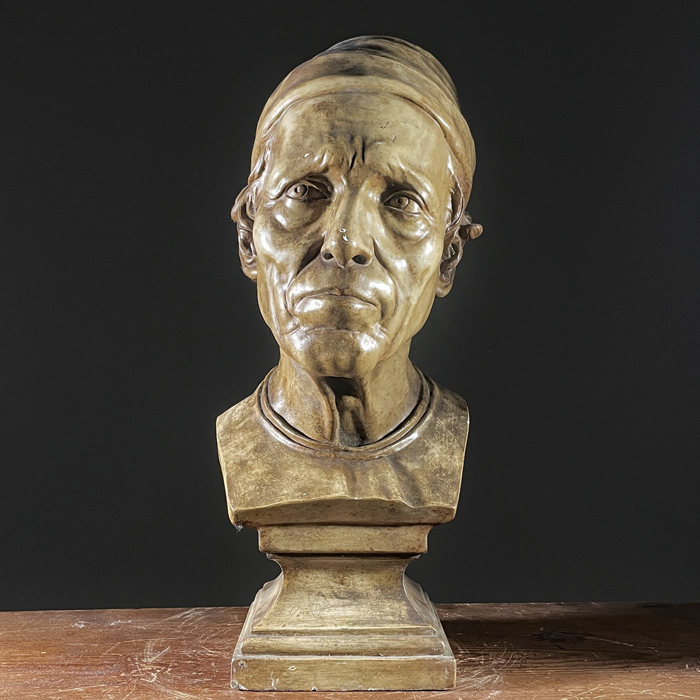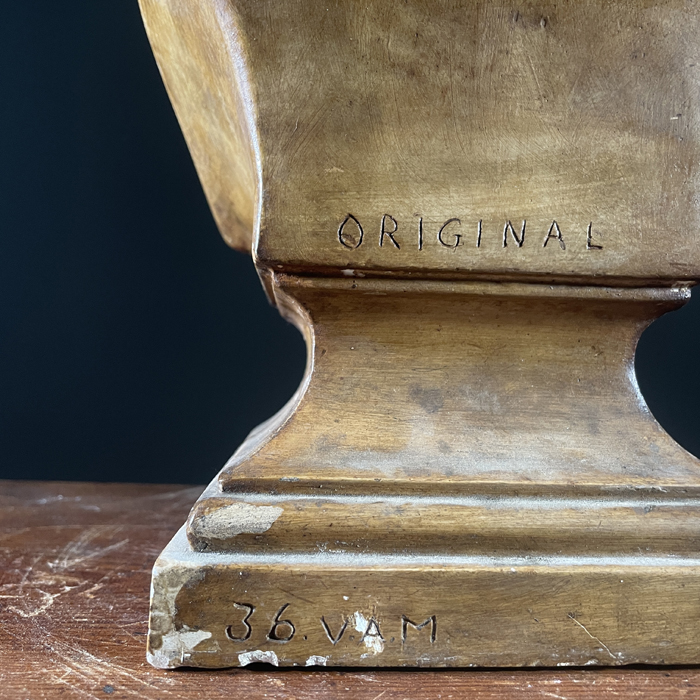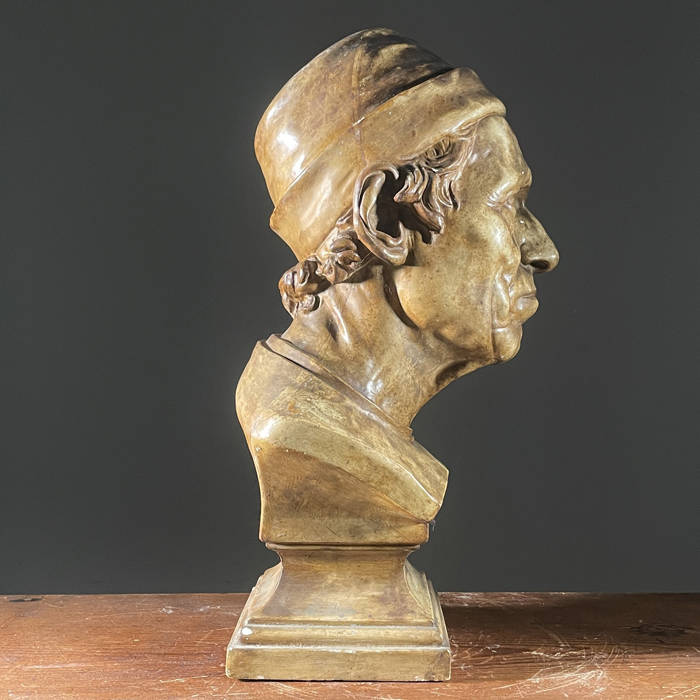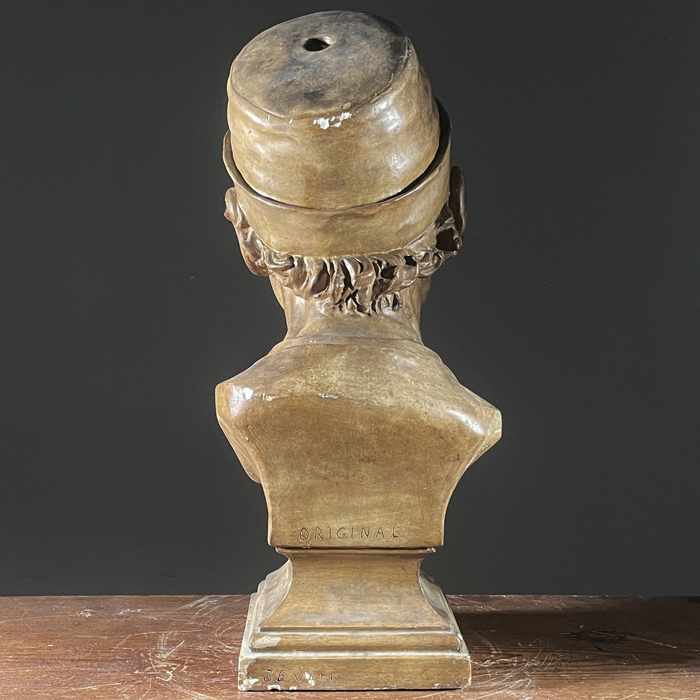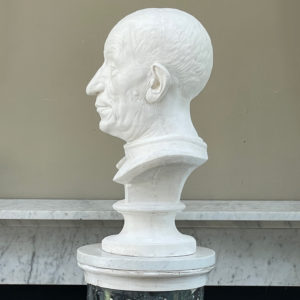A Victorian plaster bust, purportedly of Girolamo Benvieni (1453-1542)
the characterful man, his curly hair protruding from his felt cap, raising his eyes a dextra, raised on a square section socle, old-shellac patina
£1,150
In stock
This bust is a cast from a marble original that was bought at auction in Paris in 1864 for an unprecedented 13,600francs – it was soon on display in the Louvre and described as an early 16th Century portrait of Girolamo Benvieni (1453-1542) – a well-known poet and bard from Renaissance Florence. However all parties had allowed themselves to be duped by a notorious character called Giovanni Freppa (1795 – 1870).
After a somewhat colourful career Freppa was, by the 1860’s, an established antiquarian. He held considerable stock at his premises in Florence. The bust of “Benvieni” came through Freppa’s hands but was not 16th Century – Freppa had commissioned it from a young and very talented sculptor called Giovanni Bestianini: it was newly made. Bastianini had a talent for animating his sculptural works, emulating the capabilities of the Renaissance greats. In order to personify the great poet, Freppa and Bestianini chose as their model a certain Giuseppi Bonaiuti – one of the workers employed in the old tobacco factory in Florence. (Giuseppi was known to his colleagues as “Il Priore” – they would have been astonished to have seen his likeness captured in marble and on display alongside the great Renaissance masterpieces in the Louvre).
Freppa still had a cut in the proceeds of the bust when it sold in Paris. When Bestianini got to hear of it and compared his remuneration with Freppa’s proceeds he let it be known that the bust was from his hand (many didn’t believe him). It became known as the “Benvieni scandal”.
There is no room here to detail the varied and chequered career of Giovanni Freppa but it includes stints in charcoal-selling, publishing, finance and money-lending, dealing in antiquities, running a lottery and peddling forgeries. He was a charmer, a pianist, a womaniser (his exasperated wife – a highly regarded French singer – sued for divorce and left for Paris) and a fraud. For the full story read: Anita Muskowitz “Giovanni Freppa – “Jack of all Trades”” in Journal of Italian Studies, August 2019.
Whether it was before or after the Benvieni Scandal broke, the South Kensington Museum acquired a plaster cast of the bust (more likely that it would have been prior). They still have a rendition of the bust – their’s with a different socle and the hat omitted – it has an 1869 acquisition number. This rendition differs in that with the full hat it is probably a later re-working in the Victoria and Albert Museum (as The South Kensington Museum became known); it is incised with “V.A.M” and “ORIGINAL” and coated with shellac probably indicating it was previously reserved there as a Type Cast.

